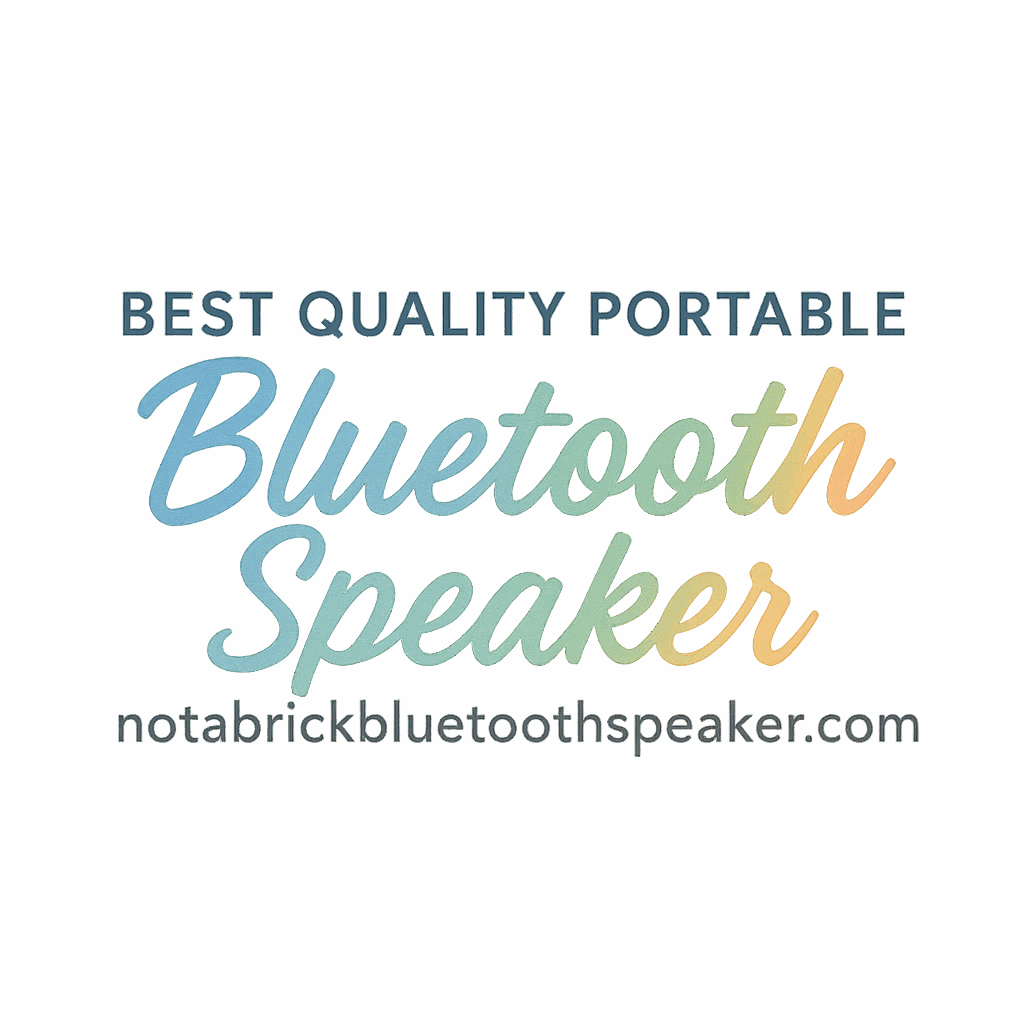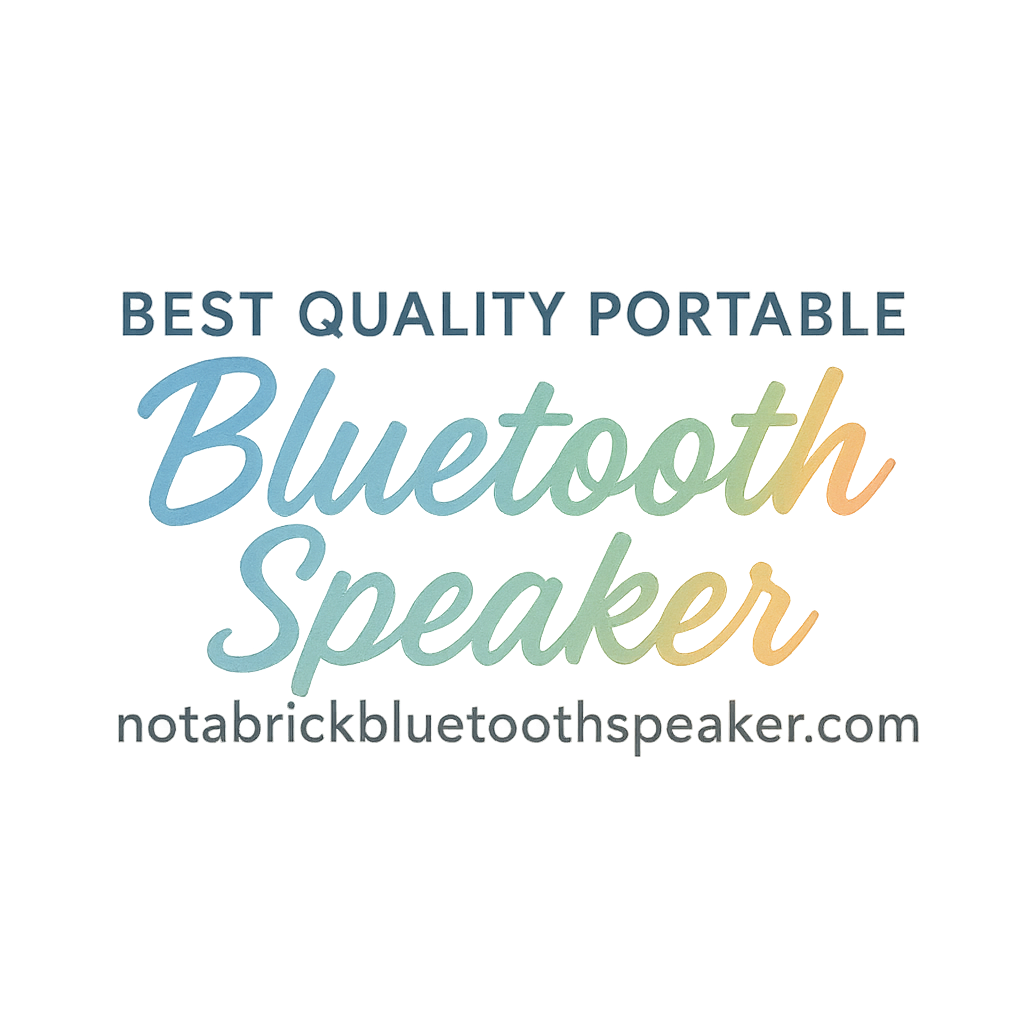Introduction
Ever wondered why your favorite songs sound great in some settings and not in others? It might not be the speaker — it’s probably the sound mode! Today’s Bluetooth speakers come loaded with sound modes that tweak audio for different types of listening experiences. But what exactly do those modes mean?
In this guide, we’ll unpack the 5 most common sound modes in Bluetooth speakers and show you how to use them like a pro. Whether you’re vibing to deep bass, catching up on your favorite podcast, or throwing a house party, there’s a sound mode for that. 🎶
Why Sound Modes Matter
Let’s face it — no two tracks or audio experiences are the same. One minute you’re watching a documentary, and the next you’re blasting EDM in your backyard. Sound modes let you customize the audio output to match the moment. It’s like switching lenses on a camera — same hardware, different focus.
So if you’re investing in a quality Bluetooth speaker, you’ll want one with multiple sound modes. You’ll hear the difference — and feel it too.
👉 For top speaker picks and detailed comparisons, head over to our Buying Guides or check our Comparison Reviews.
What Are Sound Modes?
Sound modes are pre-configured audio settings designed to enhance different elements of sound — like bass, treble, vocals, and spatial effects. These modes can dramatically change the way music, dialogue, or ambient noise is heard.
How Sound Modes Work
Each mode adjusts the speaker’s internal equalizer (EQ) to amplify or reduce specific frequencies. For instance, Bass Mode pumps up the low-end frequencies, while Treble Mode focuses on the high-end.
Key Benefits of Using Sound Modes
- Improved clarity for speech or vocals
- Enhanced immersion for movies and gaming
- Richer music experience tailored to genre
- Personalized audio for indoor vs. outdoor settings
1. Bass Mode
What is Bass Mode?
Bass Mode is your go-to setting when you want to feel the music in your bones. It boosts the lower frequencies (20Hz to 250Hz), making the sound deeper, fuller, and punchier.
When to Use Bass Mode
- Listening to hip-hop, EDM, or dubstep
- Watching action-packed movies
- Partying outdoors or in large spaces
Pros and Cons of Bass Mode
Pros:
- Powerful sound presence
- Great for dance and party music
- Enhances sub-bass vibrations
Cons:
- May overshadow vocals
- Less clarity in acoustic tracks
➡️ Want more insight into speaker performance? Don’t miss our Performance and Sound Tips sections.
2. Treble Mode
What is Treble Mode?
This mode highlights higher frequency ranges (2kHz to 20kHz). Treble Mode sharpens the sound and brings out the delicate details like cymbals, hi-hats, and female vocals.
When to Use Treble Mode
- Acoustic and classical music
- Podcasts with soft voices
- Environments with ambient noise
Pros and Cons of Treble Mode
Pros:
- Crisper sound
- Better for softer genres
- Great clarity in speech
Cons:
- Can sound sharp or tinny at high volume
- Lacks depth compared to Bass Mode
Want to geek out on sound clarity and technology? Browse our posts tagged Audio and Technology.
3. Balanced or Normal Mode
What is Balanced Mode?
Balanced (or Normal) Mode is the default EQ setting. It gives equal importance to all frequency ranges — low, mid, and high.
When to Use Balanced Mode
- Everyday music listening
- Mixed playlists with different genres
- Phone calls and casual TV watching
Pros and Cons of Balanced Mode
Pros:
- Versatile for all content types
- Maintains natural sound
- No frequency bias
Cons:
- Not optimized for specific genres
- May feel flat in high-energy tracks
🧐 Learn how Balanced Mode compares in our Comparison Reviews and Buying Guide.

4. Vocal or Podcast Mode
What is Vocal Mode?
This mode brings speech to the forefront by boosting the mid-range frequencies (500Hz to 2kHz). It’s perfect for clarity in dialogue-heavy content.
When to Use Vocal Mode
- Podcasts and audiobooks
- News broadcasts
- Zoom or conference calls
Pros and Cons of Vocal Mode
Pros:
- Clear, focused vocals
- Ideal for spoken content
- Reduces background music interference
Cons:
- Not suitable for music with deep bass
- Can sound too flat for party settings
🔧 Struggling to find the right sound? Check our Usage Tips & Tricks and Troubleshooting pages.
5. 3D Surround or Party Mode
What is 3D Surround Mode?
3D Surround Mode uses audio processing to create a wider soundstage. It makes you feel like the sound is coming from multiple directions — similar to a mini home theater.
When to Use Surround Mode
- Watching movies
- Gaming sessions
- House parties or outdoor BBQs
Pros and Cons of Surround Mode
Pros:
- Immersive experience
- Fills large rooms easily
- Great for movie nights
Cons:
- May distort fine details
- Not ideal for critical listening
🎉 For epic party vibes, check out our Portable Speaker and Long-Lasting recommendations.
How to Switch Sound Modes on Your Bluetooth Speaker
Switching modes is usually a button press away — either on the speaker itself or via a mobile app. Some speakers even use voice commands or AI to auto-adjust the EQ.
💡Tip: Refer to the manual or visit the Features & Specs section for detailed instructions by brand.
Choosing the Right Mode for the Right Moment
It’s not about using just one mode. Switch it up depending on what you’re doing:
- Bass for beats
- Treble for detail
- Balanced for everyday
- Vocal for clarity
- 3D for immersion
🎧 Placement matters too! Explore our Placement tips to get the best sound out of your space.
Common Mistakes to Avoid When Using Sound Modes
- Forgetting to switch back — Don’t leave it on Bass Mode when listening to a podcast.
- Using Surround Mode in small spaces — It can sound messy.
- Cranking volume with Treble Mode — It gets harsh fast.
Check out more do’s and don’ts in our Care section.
Do All Bluetooth Speakers Have Sound Modes?
Nope, not all of them. Some budget models only have a fixed EQ. If you want flexibility, look for models that mention “sound modes” or “EQ customization.”
👉 We list the best options under the Bluetooth Speaker and Best tags.
Best Bluetooth Speakers with Multiple Sound Modes
Some top brands known for diverse sound modes:
- JBL (check our JBL reviews)
- Sony Extra Bass series
- Bose SoundLink series
- Ultimate Ears Boom series
Compare them in our in-depth Buying Guides and Alternatives section.
Final Thoughts
Sound modes aren’t just a gimmick — they’re tools to fine-tune your listening experience. Whether you’re an audiophile or just someone who wants better sound for different settings, knowing how and when to use these modes makes all the difference.
So next time you fire up your Bluetooth speaker, take a second to flip through the sound modes. You might be surprised how much better your favorite song or movie sounds.
Ready to level up your listening? Dive into more sound wisdom over at Not A Brick Bluetooth Speaker!
FAQs
1. Can I add sound modes to my existing Bluetooth speaker?
Not usually — unless the speaker supports app-based EQ adjustments. Otherwise, what you see is what you get.
2. Is Bass Mode safe for long-term use?
Yes, but avoid max volume to protect your speaker’s drivers.
3. What mode is best for outdoor use?
3D Surround or Bass Mode — they project better in open spaces.
4. Why does my speaker sound distorted in Surround Mode?
You might be too close, or using it in a small, echo-prone room.
5. Which Bluetooth speaker has the best sound modes?
JBL, Sony, and Bose lead the pack. Visit our Best section for curated picks.
6. Can I customize sound modes myself?
Some brands allow EQ tweaking via their apps. Check your speaker’s compatibility on our Features page.
7. Are sound modes just a marketing gimmick?
Not at all. When used right, they significantly improve audio quality based on your environment and content.


